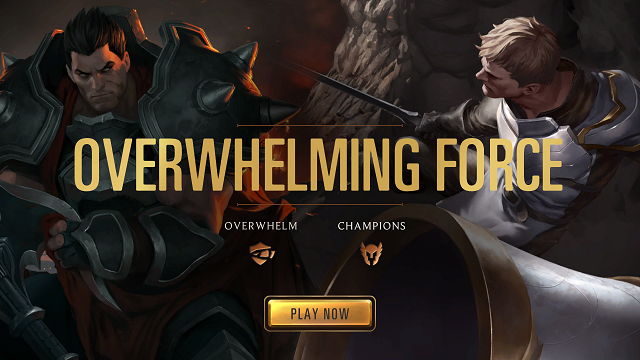Legends of Runeterra, despite being a fantastic card game, is a little complex. And though the in-game tutorials are pretty diverse and useful, they don’t cover everything. Thankfully, we’re here to help!
This Legends of Runeterra guide tells you six things the tutorial doesn’t teach you.
Legends of Runeterra Beginner’s Guide — 6 Things the Tutorial Doesn’t Teach You
#1: Don’t Trust Everything You See in Runeterra

Let’s start with something Legends of Runeterra‘s tutorial does teach you: people lie. Yep, that’s right, Riot lies to you throughout the tutorial.
See that “Decisive Action” card pictured above? Doesn’t exist. You can’t actually craft it; it exists solely in this tutorial segment.
See that “Final Spark” card also pictured above? It’s actually a 0-mana slow spell that Lux creates once she’s leveled up.
There are also various other spells, units, and card text — champion abilities, especially — that have been created purely for the tutorial. They’re just there to teach you the basics, so don’t expect to build a deck around anything you see in the tutorials!
#2: What Even is a “Champion Spell”?

Next, let’s explain something that’s only touched on briefly by the tutorials: Champion Spells. In Legends of Runeterra, you can only play one copy of a champion card at a time.
If you have more copies of that champion in your hand — or you draw into them — while the unit on your board is still alive, the excess copies will be converted into a signature spell: their Champion Spell.
In the example above, you can see the Champion Spell for Elise, which is a copy of Crawling Sensation. Note that it has the added line of text: every Champion Spell will shuffle a copy of that champion back into the deck when used. If you summon one Elise, any additional copies in your hand will change into this spell. Once the Elise on your board dies, they’ll change back to copies of Elise again.
It’s simple once you get used to it, but can definitely be confusing for new players. Now, you can summon multiple copies of a Champion at once, but this is done using revive effects like The Rekindler and Mist’s Call.
#3: Don’t Get Overwhelmed

While there is a tutorial revolving around the Overwhelm mechanic, it misses out something vital that most people will attempt at some point: When a unit with Overwhelm attacks into a unit with Barrier, the defender still takes Nexus damage.
This may seem counter-intuitive at first, as Barriers are supposed to negate damage, but the nuance lies in the wording.
The keyword text for Barrier states that it “Negates the next damage the unit would take.” The Overwhelm damage is not being dealt to the unit, but to the enemy’s Nexus, and this portion of the damage still goes through.
It’s important to remember that Overwhelm damage has to be stopped by removing the attacker in some way, as they’ll break right through anything you put in front of them that doesn’t have a high health stat.
#4: No Heal For You!

Speaking of Barriers, there’s another useful piece of information you should know about them: they block Lifesteal effects.
This can be the difference between a win and a loss, so countering Lifesteal units with a Barrier can be extremely helpful.
In the example above, casting Prismatic Barrier on my Tryndamere will stop my opponent’s Darkwater Scourge from healing their Nexus.
The same effect happens when Barriers clash, such as when your opponent plays Spirit’s Refuge, for example. Simply counter with your own Barrier effect and they’ll be left without any free healing!
#5: Limited Deck Space

Decks in Legends of Runeterra have to have exactly 40 cards. If you try to draw once you’ve run out of cards to draw, you immediately lose the game! This is also known as a “deck out“.
If both players run out of cards at the same time — or with the same card effect, such as Veteran Investigator — then the game will end as a tie.
This is particularly important to know thanks to the Rising Tides Expansion; lots of new Bilgewater cards have the ability to draw from an opponent’s deck, and Maokai has a win condition built specifically around decking you out.
Don’t get caught short. Always keep an eye on how many cards you have left!
#6: Unlimited Power!

Finally, let’s finish with one of the newest mechanics added to Legends of Runeterra in Patch 1.0.
The maximum number of units you can own at the same time is six. If you want to play any more beyond this, you can choose a unit to Obliterate and replace.
You used to be stuck with a board of six units and would have to find a way to remove or kill one before you could play any more, so this might be a little confusing for returning players.
It’s important to note that Obliterate is a keyword in Legends of Runeterra that destroys the card completely, preventing it from being revived later, so choose carefully!
You also won’t trigger any Last Breath effects from Obliterating the card you replace, either.
—
There are definitely more advanced things the tutorial also doesn’t teach you, so if you’re looking for more tips to improve at Legends of Runeterra, look no further than our dedicated guide page.







Published: Apr 30, 2020 10:31 am